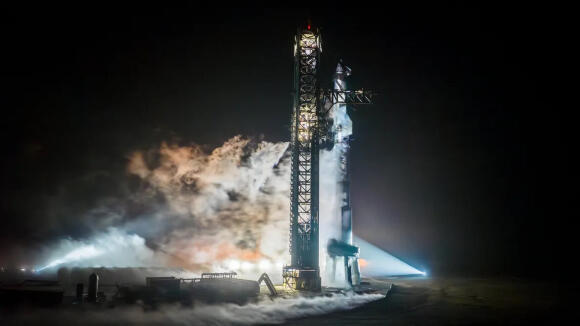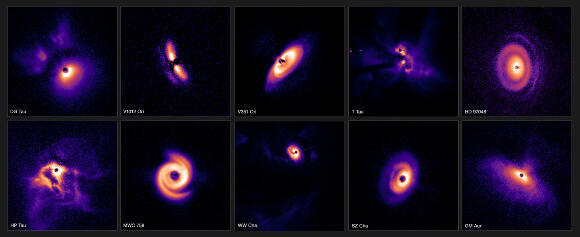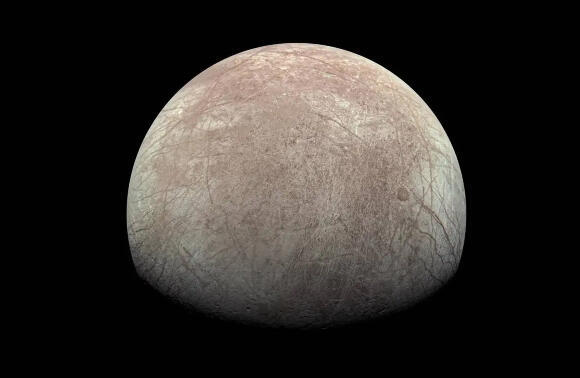Third Time's a Charm? SpaceX has announced its intention to conduct another test flight, marking the third consecutive attempt to launch Starship – the giant spacecraft it has been developing, which, among other things, was designed with the goal of facilitating the return of astronauts to the lunar surface. The upcoming trial is tentatively scheduled for Thursday, March 14th. This time around, SpaceX aims to test several aspects that were not previously addressed in the initial two trials.
Read more:
The giant spacecraft is launched atop the "SuperHeavy" rocket, and the entire system is also collectively called "Starship," which can be somewhat confusing. Initially, the plan for previous tests involved the rocket crashing into the sea near the Texas coast, not far from the launch site, with the long-term vision involving the rocket landing vertically, in a controlled manner for reuse in future missions.
3 View gallery


New challenges await the third trial, Starship spacecraft and its SuperHeavy launch rocket on the company's launch pad in South Texas, in preparations for the next launch
(Photo: SpaceX)
The spacecraft was set to complete approximately three-quarters of an orbit around Earth, reaching an altitude of about 250 kilometers before crashing in Hawaii after about an hour and a post-launch. The spacecraft itself is also intended to be reusable in the future, executing controlled vertical landings.
During its inaugural test, in April 2023, the spacecraft failed to detach from the launch rocket as planned, and both were destroyed in a controlled explosion. Following this setback, SpaceX was requested to implement over a thousand modifications before gaining the green light for a second trial in November 2023.
This time Starship reached space but exploded shortly thereafter, with the launch rocket also exploding in the air post-separation. An investigation by the United States Federal Aviation Administration (FAA) ensued, and as a result, the SpaceX was required to implement 17 corrections to the Starship system, mainly to reduce the risk of a fuel leak that would cause an explosion. At the end of last month, SpaceX announced that it had completed the corrections, and performed another round of pre-launch refueling tests for the spacecraft and the rocket in early March.
For the forthcoming experiment, SpaceX has altered the flight trajectory. Instead of crashing near the coast of Hawaii, the spacecraft is slated to do so in the Indian Ocean after 65 minutes of flight. Additionally, during the flight, it is also supposed to activate engines in space, something that was not planned in the previous experiments, to examine the possibility of potential course alterations.
Furthermore, the trial will include an attempt to transfer fuel between tanks to evaluate in-space refueling technology. Such refueling will be required as part of the planned outline for NASA's Artemis missions, in which Starship is designated as the crewed lunar landing vehicle. To facilitate a manned landing on the Moon, approximately ten spacecraft launches will be necessary, primarily for refueling the landing vehicle.
According to NASA's official planning, it intends to carry out the Artemis 3 mission, in which humans will again set foot on the Moon, for the first time since the Apollo program - in September 2026. This date was already set after a one-year delay attributable to delays in the development of the Orion spacecraft, which will carry the astronauts into orbit around the Moon, and also due to the delay of SpaceX in developing Starship.
Although NASA asserts this remains the intended timeframe, achieving this goal within a mere two and a half years seems challenging, especially considering Elon Musk's recent estimation that the company will land humans on the Moon "in less than five years."
The birth of planets
A particularly comprehensive study by an international team of astrophysicists has yielded new insights into the processes of planet formation in other solar systems. The researchers used the Very Large Telescope (VLT) of the European Southern Observatory in Chile to deeply examine the gas and dust disks around more than eighty young stars, where planets may form.
3 View gallery


Some of the planet-forming disks captured in the current study, The star itself is hidden in the image, to prevent its light from obscuring the delicate structures of the disks
(Photos: ESO/C. Ginski, A. Garufi, P.-G. Valegård et al.)
Among other things, Their findings reveal a diverse array of disk shapes and structures, highlighting a richer complexity in planet formation. Interestingly, the study indicates a reduced occurrence of planet formation processes in binary star systems compared to single-star systems.
The observations focused on three regions in the sky, and are detailed accordingly in three research papers, which deal with the formation of planets in the Pleiades and Taurus constellations, which are about 600 light-years away from us, and in those same processes in the Orion constellation, situated about 1,600 light-years distant.
The research also yielded an impressive gallery of images of the planet-forming disks, in a wide variety of shapes, including spiral arms, a variety of ring types, "holes" formed as disk material coalesces into a planet, and more. “It is almost poetic that the processes that mark the start of the journey towards forming planets and ultimately life in our own Solar System should be so beautiful,” said one of the researchers, doctoral student Per Gunnar Valegård from the University of Amsterdam, the Netherlands, reflecting on the study's significance.
Europa's thin breath
Europe, one of Jupiter's four large moons, appears to emit significantly less oxygen than previously estimated, as revealed by a study conducted with the help of the American spacecraft Juno, which studies Jupiter and its moons. Europa's outer layer consists of ice tens of kilometers thick, beneath which liquid water is believed to exist. Jupiter's intense magnetic field generates a flux of charged particles that bombard Europa's surface, breaking apart water molecules in the ice and releasing oxygen and hydrogen atoms into space.
3 View gallery


There's oxygen present, but in lesser amounts, The moon Europa, as captured during the pass of the spacecraft Juno in September 2022
(Photo: NASA/JPL-Caltech/SwRI/MSSS)
Around a year and a half ago, in September 2022, the spacecraft passed within just 354 kilometers of Europa's surface, using its instruments to analyze the concentration of electrically charged particles—predominantly hydrogen atom nuclei, which are simply single protons. Based on these measurements, the researchers calculated that Europa emits approximately 12 kilograms of oxygen per second - a stark contrast to the earlier estimates of over a thousand kilograms per second.
“Our ability to fly close to the Galilean satellites during our extended mission allowed us to start tackling a breadth of science, including some unique opportunities to contribute to the investigation of Europa’s habitability,” said Scott Bolton, from the Southwest Research Institute in Texas, San Antonio, Juno’s lead scientist.

